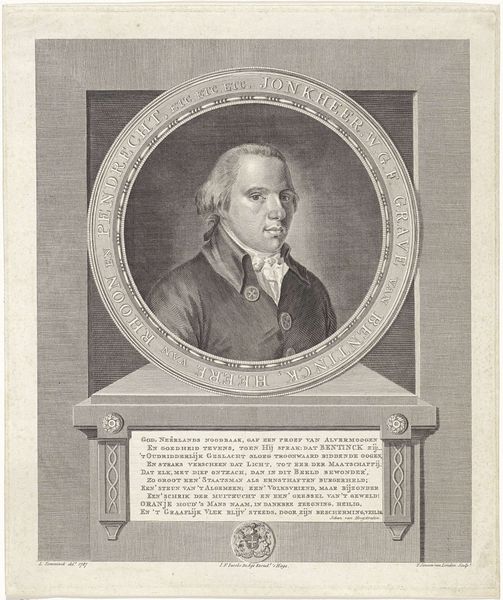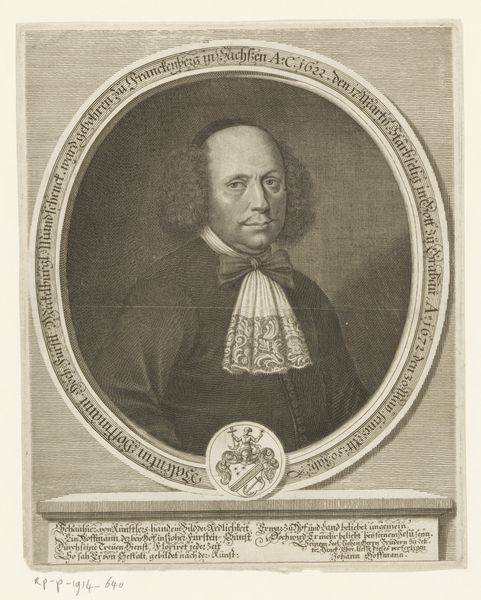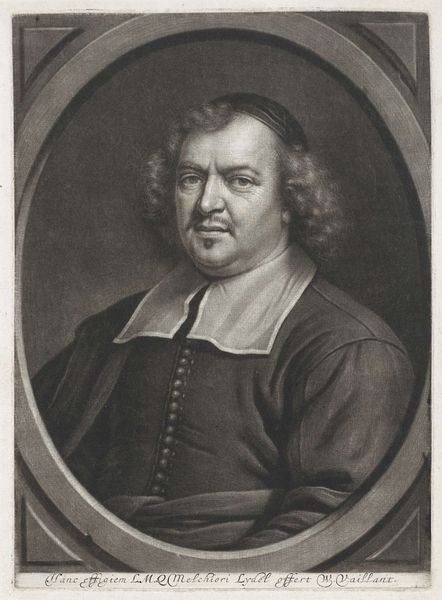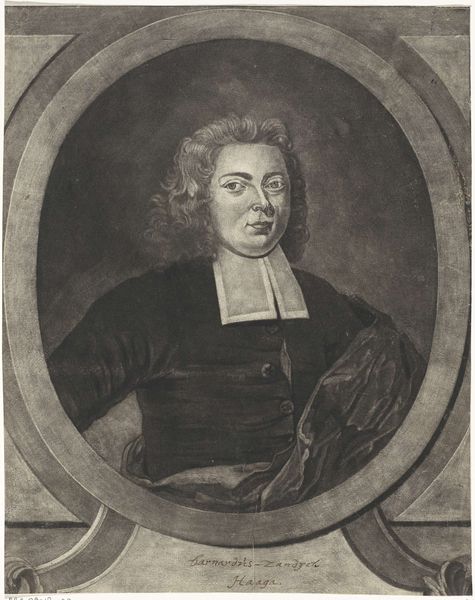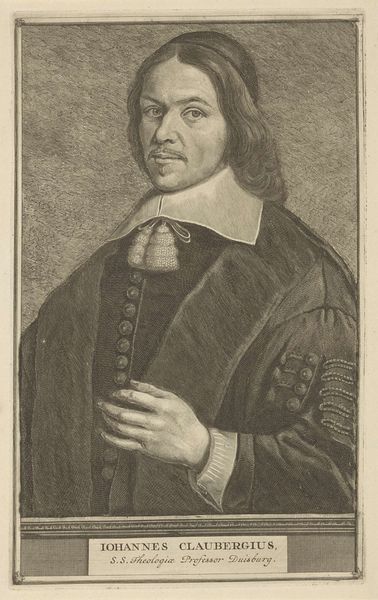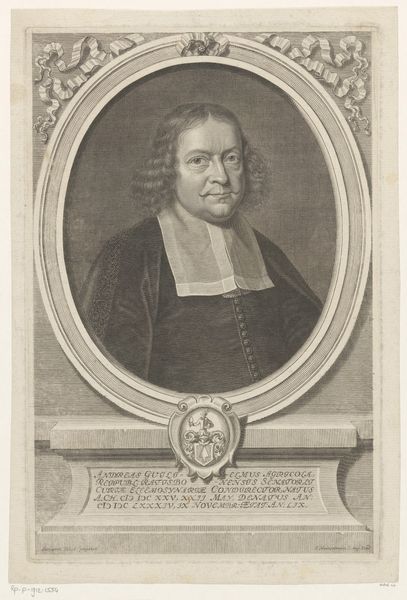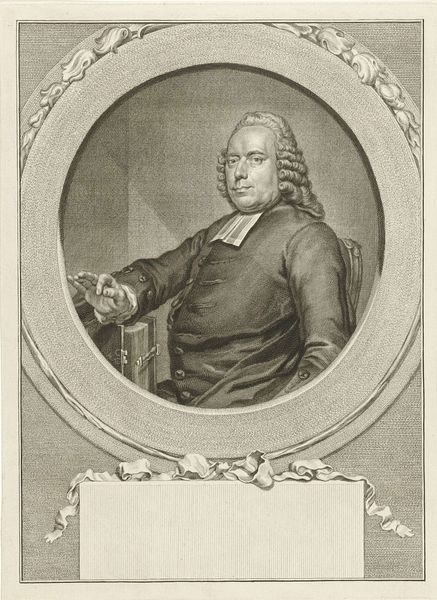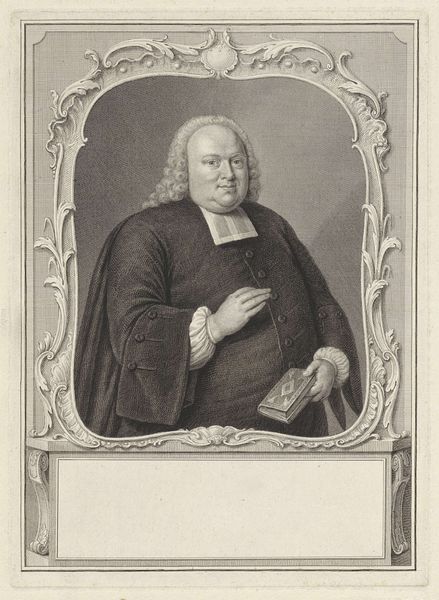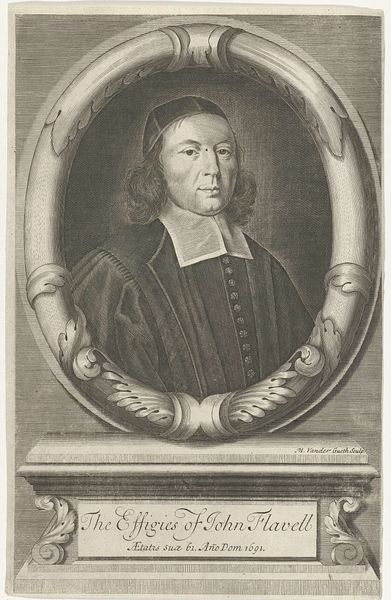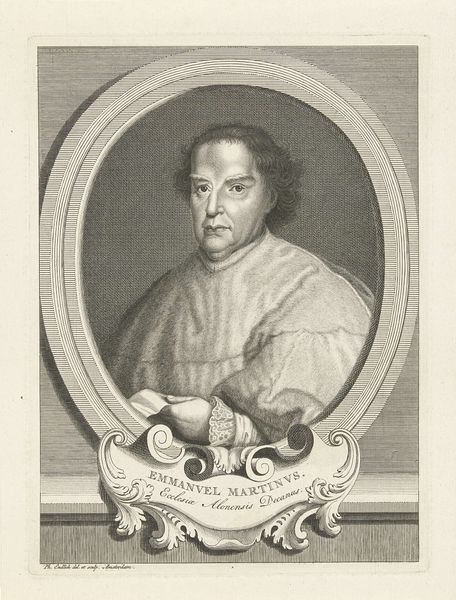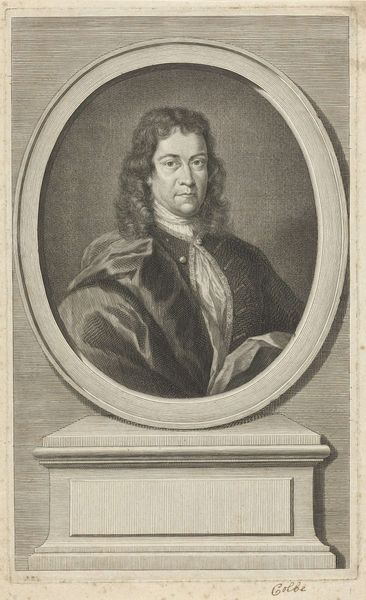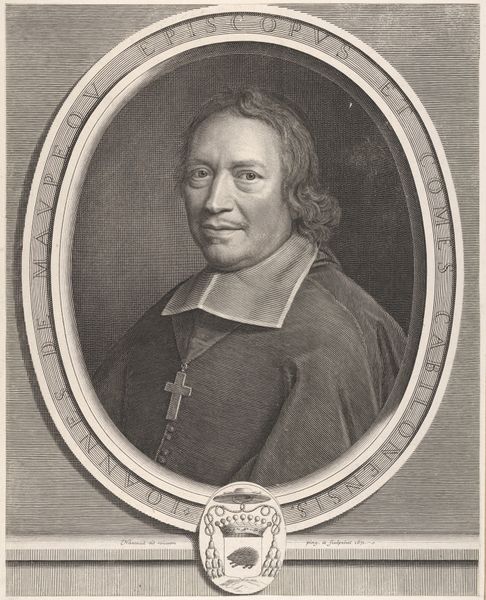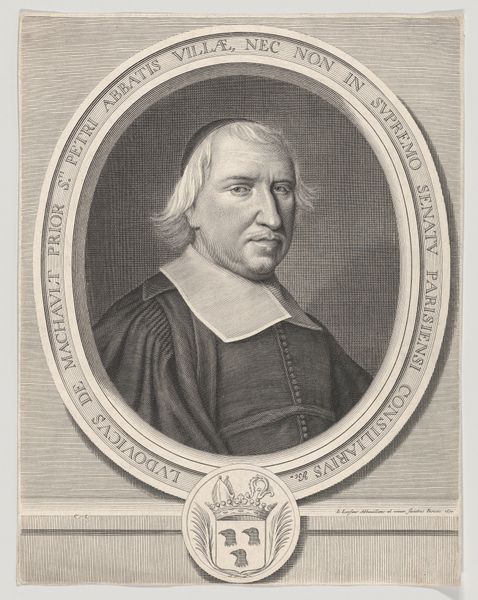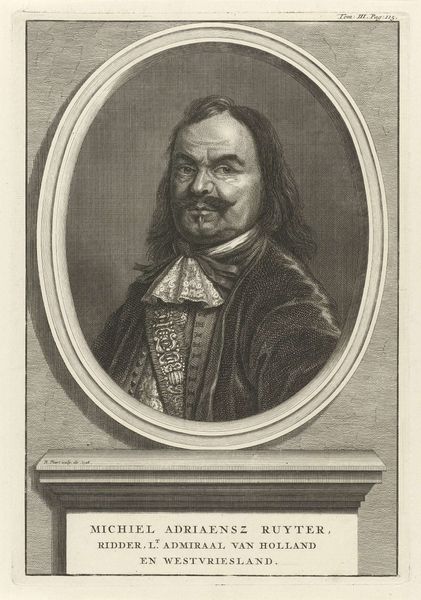
painting, oil-paint
#
portrait
#
self-portrait
#
baroque
#
portrait
#
painting
#
oil-paint
Dimensions: 122 x 107 cm
Copyright: Public domain
Curator: What strikes me immediately about Bartolomé Esteban Murillo’s "Self-Portrait" from 1673 is its somber and self-aware tone. Editor: The way Murillo presents himself certainly projects an interesting character study. We see him framed by an ornate oval, looking out, engaging us. I am interested in how he crafts this presentation of self. Curator: Indeed. Murillo has created not only a portrait of himself, but also an interesting comment on the artist’s profession and its connection to a developing economy. Here at the National Gallery, it stands as a testament to his process of creating art for consumption. Notice the scroll, the inscription and painting supplies right on the front. Editor: Absolutely, this Baroque composition is deliberately staged. Look how Murillo has structured the use of chiaroscuro; it dramatizes the visual plane of the artwork and helps pull out different components, almost hierarchically, with the painter front and center. He emerges from the dark space. Curator: Yes, there's a tension between the grand gesture of self-presentation within the confines of artistic labour, showing the materials and tools needed to craft this "genius" at work. I imagine that commissioning collectors sought tangible value for the status such artworks provided. Editor: Exactly! The color palette here—primarily dark tones—contributes to this reflective mood, a stark but rich materiality brought forth by the oil paint and baroque style. Curator: And this very contrast between darkness and light is something that he likely learned in Seville, which adds another layer to understanding not only his visual training, but also what the community he represents. It feels indicative of larger structures impacting craft, not unlike a studio self-portrait today. Editor: Thinking about what an audience brings in their viewing is important, so by breaking down how such intrinsic design qualities convey certain meaning for a 17th century, as well as a contemporary viewer, it can offer so much cultural context. Curator: True, looking closely reminds me how important material and market considerations always have been—never divorced from formal decisions. It's about the relationship of patronage and production in this case. Editor: Analyzing form can also tell a story that contextual readings alone simply miss—Murillo, through pigment and pictorial construction, fashioned the artifice through which we see him today.
Comments
No comments
Be the first to comment and join the conversation on the ultimate creative platform.
